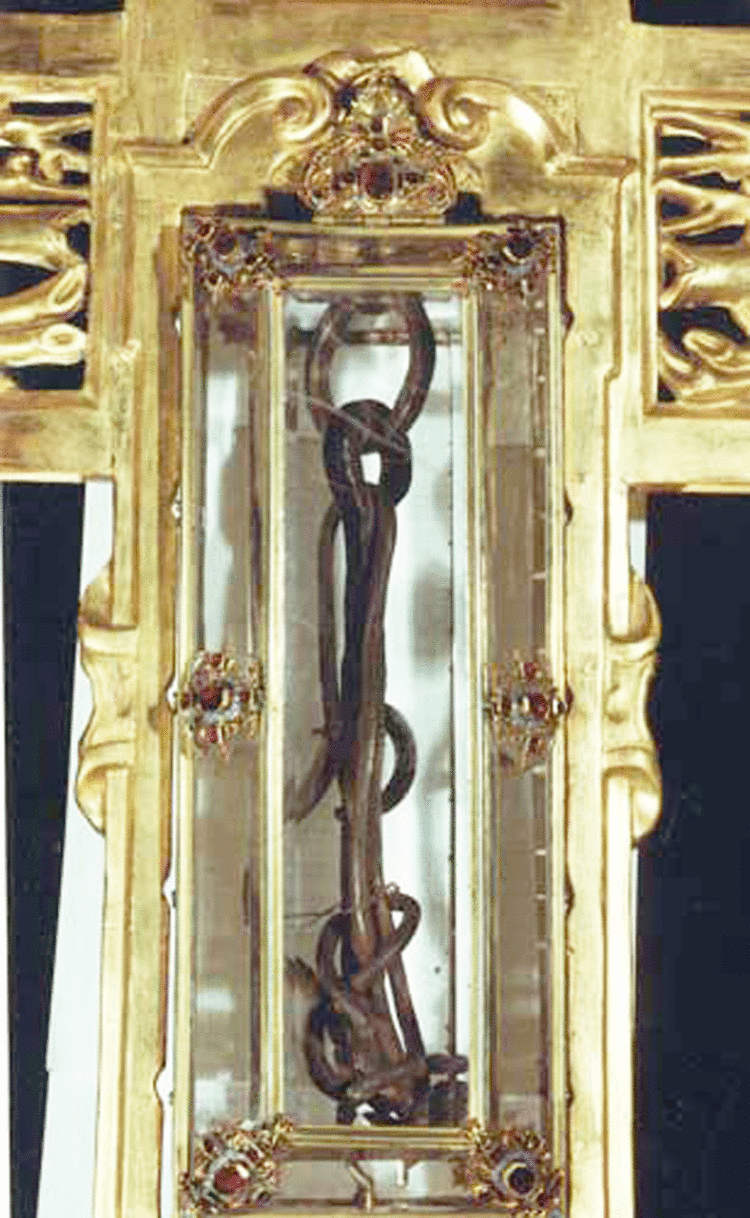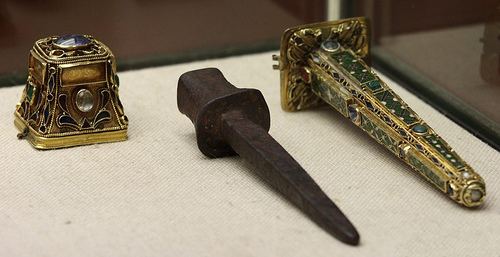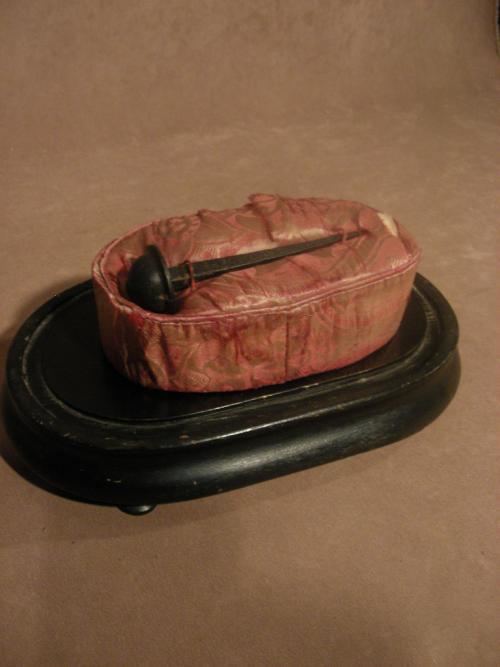 | ||
Relics that are claimed to be the Holy Nails with which Christ was crucified are objects of veneration among some Christians, i.e., among Catholics and the Eastern Orthodox. In Christian symbolism and art they figure among the Instruments of the Passion or Arma Christi, the objects associated with Jesus' Passion. Like the other Instruments the Holy Nails have become an object of veneration among many Christians and have been pictured in paintings and supposedly recovered.

When Helena, mother of Constantine the Great discovered the True Cross in Jerusalem, the legend was told by and repeated by Sozomen and Theodoret that the Holy Nails had been recovered too. Helena left all but a few fragments of the Cross in the Basilica of the Holy Sepulchre in Jerusalem, but returned with the nails to Constantinople. As Theodoret tells it in his Ecclesiastical History, chapter xvii,

The mother of the emperor, on learning the accomplishment of her desire, gave orders that a portion of the nails should be inserted in the royal helmet, in order that the head of her son might be preserved from the darts of his enemies. The other portion of the nails she ordered to be formed into the bridle of his horse, not only to ensure the safety of the emperor, but also to fulfil an ancient prophecy; for long before Zechariah, the prophet, had predicted that 'There shall be upon the bridles of the horses Holiness unto the Lord Almighty.

One of the nails is said to have come to rest in the Iron Crown of Lombardy.
The authenticity of many of these relics is in question. The Catholic Encyclopedia remarked that given that the question has long been debated whether Christ was crucified with three or with four nails:

Very little reliance can be placed upon the authenticity of the thirty or more holy nails which are still venerated, or which have been venerated until recent times, in such treasuries as that of Santa Croce in Rome, or those of Venice, Aachen, Escurial, Nuremberg, Prague, etc. Probably the majority began by professing to be facsimiles which had touched or contained filings from some other nail whose claim was more ancient. It is conceivable that imitations in this way may have come in a very brief space of time to be reputed originals.

The bridle of Constantine, for instance, is believed to be identical with a relic of this form which for several centuries has been preserved at Carpentras, but there is another claimant of the same kind at Milan. Similarly the diadem of Constantine is asserted to be at Monza, and it has long been known as "the iron crown of Lombardy." Simple fraud is also a possibility. The tale behind the bridle of Constantine originates with the fifth-century Church historian of Constantinople, Socrates of Constantinople, in his Ecclesiastical History, which was finished shortly after 439. According to Socrates, after Constantine was proclaimed Caesar then Emperor, he ordered that all honor be paid to his mother, Helena to make up for the neglect paid her by her former husband, Constantius Chlorus. After her conversion to Christianity, Constantine sent her on a quest to find the cross and nails used to crucify Jesus. A Jew called Judas (in later retellings called Cyriacus) led her to the place they were buried. Several miracles were claimed, to prove the authenticy of these items, and St. Helena returned with a piece of the cross and the nails. The story that one nail was used to make a bridle, one was used to make the Helmet of Constantine and two were cast into the Adriatic Sea has its origins with Socrates.
The question of whether Christ was crucified with three or four nails has long been debated, and can hardly be answered with references to medieval treatises or ancient iconic traditions. The details can be followed, however, in the Catholic Encyclopedia (see external link below). The belief that three nails were used is called Triclavianism.
